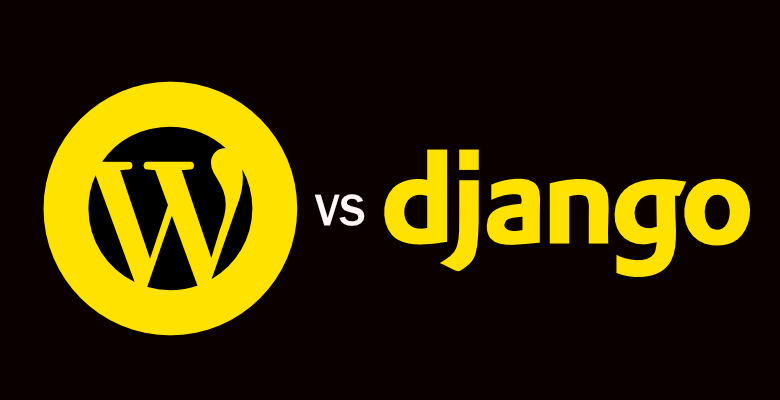Updated 2023
WordPress and Django are two popular platforms. They each come with powerful features, allowing you to build powerful websites and high-performing applications quickly. But is it a case of WordPress vs. Django regarding the two platforms, or are they simply different tools for different jobs? With hundreds of product engineering projects under our belt, we have years of experience with both platforms, so we are uniquely placed to explore and explain their usage.
WordPress Usage
WordPress is used by 36.28% of the top 1 million websites, and approximately every 2 minutes, another top 10 million website starts using it. Over 810 million websites worldwide currently use the CMS, meaning that WordPress powers 43% of all websites. Originally a blogging platform, it’s easy to see why WordPress is the leading name in CMSes and why it has such an incredible market share.
Benefits of using WordPress
- Free to use: Like most off-the-shelf solutions, WordPress is free to use. Anyone can sign up and create their own website without paying a penny.
- User-friendly: There’s a reason why WordPress is powering nearly half of the entire internet – its user-friendly nature. With a couple of hours to spare, anyone can learn how to manage a basic website through the platform with no coding knowledge necessary!
- SEO capabilities: Most WordPress users will opt for the Yoast SEO plugin. You do, however, get plenty of SEO tools out of the box when you sign up. These include adding titles, headlines, meta descriptions, alt text, etc.
Django Usage
Unlike WordPress, Django is a Python web framework that encourages quick development and clean, pragmatic design. It was designed to meet the challenges of the intensive deadlines of a newsroom and for the strict requirements of experienced developers. It allows you to build powerful and elegant web apps quickly. SimilarTech shows that 83,971 websites are currently using Django, including household names like NASA and The Washington Post. This may not seem as impressive as WordPress’ user stats, but you have to keep in mind that Django is often used as a microservice. The user statistics for that are impossible to track accurately, but it does mean that far more than 83,971 websites are using Django, just not in a way that can be tracked and reported.
Just like WordPress has its benefits, so too does Python. Although not as widely used, it still has plenty of features that make it a popular choice, especially with developers.
Benefits of Django
- Open source: Django is also an open-source framework, making it free to use and great for building dynamic websites. Although it is mainly a backed framework, so you will have to pair it with a suitable frontend to bring your website to life.
- Secure out of the box: With built-in authentication as standard and features to guard against common threats like SQL injection, Django is easily one of the most secure frameworks and CMS you could opt for.
- Superior functionality: What makes WordPress so popular with everyday users is the same feature that makes Django the top choice for seasoned developers. While it requires more prior knowledge, it allows users to create far more sophisticated and complex web applications.
The differences between WordPress and Django
The question to ask is whether WordPress is a competing CMS with Django or are they different tools doing different jobs? To answer that question effectively, we have to understand the uses of both platforms and determine if they do the same job or are of a totally different nature.
One of the major differences between the two is that Django is not a Content Management System (CMS) and it can’t do everything that WordPress can do right out of the box. Although it has a pretty smart admin, configuring it isn’t as easy as a standard CMS. Naturally, this will make it far more suitable for developers or anyone with programming experience to use. Even with the Django CSM built by a dedicated community, WordPress will always be the more appealing choice for anyone looking for CMS that they can set up and use with little to no technical knowledge.
Another big hurdle with Django compared to WordPress is that as a new user, you will likely find it difficult to configure your local environment for Django. It takes longer to install the framework locally and it can be tricky if you are not familiar with concepts like symlinks.
WordPress, as many will testify, is a very good CMS. However, it is known to be a little slow and needs a little TLC to operate at any significant level.
Scalability and speed
With WordPress you can achieve the same frontend as Django, but you may not be able to achieve the scale and speed and the maintainability of a more application-oriented architecture like Django. Django is a toolset that helps you build rich apps, whereas WordPress is an app itself, built without a framework in PHP from scratch. If you are sure your app falls within the boundaries of what is possible with WordPress, then by all means, go for it. However, if you step outside of these limits, then it would be worthwhile to use Django.
You’re also better off using Django if you’re in need of a scalable solution. Because it is a framework rather than a CMS, its architecture, unlike WordPress, doesn’t constrict so you can build out and customise features as and when you need – you just need to have the engineering knowledge to do so or have a technical team on hand.
Overall, WordPress and Django have many similar functions and your choice between the two depends on the project you are undertaking. As a new user, you’re likely to find WordPress sufficient for your needs.
